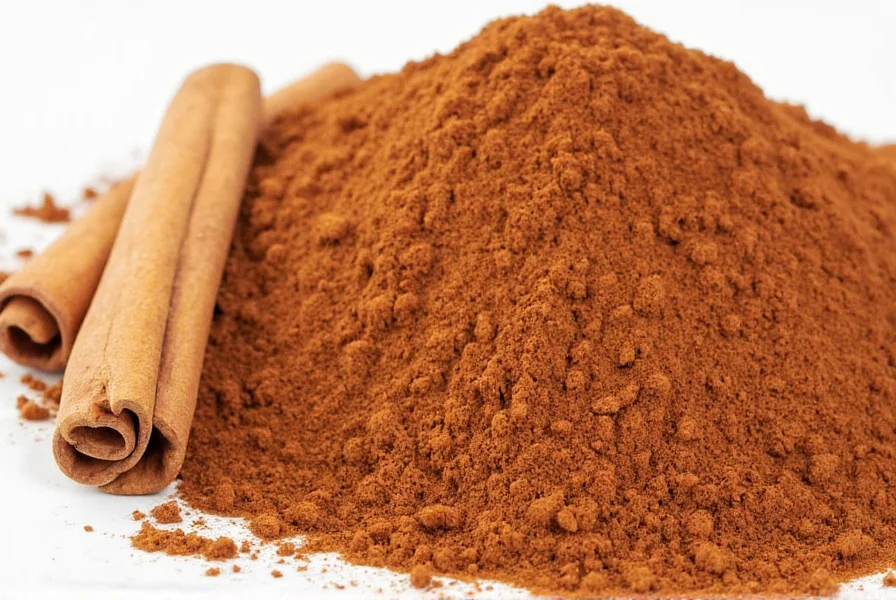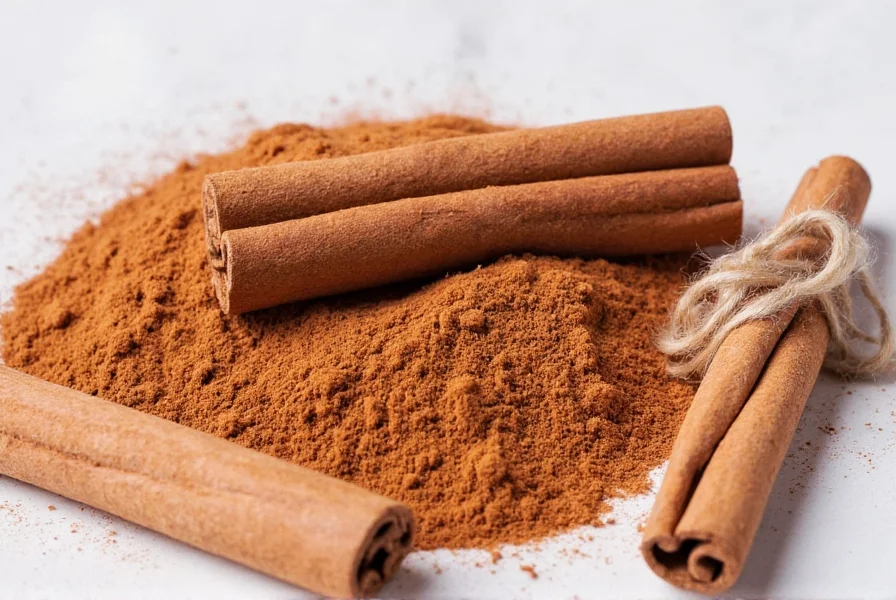When bakers mention swirl cinnamon, they're describing both the technique of rolling cinnamon filling into dough and the resulting spiral pattern that characterizes popular baked goods. Understanding this culinary technique helps both novice and experienced bakers create consistently delicious results with optimal flavor distribution.
What Exactly Is Swirl Cinnamon?
The term swirl cinnamon doesn't refer to a specific cinnamon variety but rather to the application method in baking. When making cinnamon swirl bread or rolls, bakers spread a mixture of cinnamon and sugar (sometimes with butter, nuts, or other ingredients) across rolled-out dough, then carefully roll it up to create the signature spiral pattern visible when sliced.
This technique serves multiple purposes: it ensures even flavor distribution, creates appealing visual contrast between the light dough and dark cinnamon filling, and provides textural variation throughout the baked product. The quality of your cinnamon swirl technique directly impacts both the appearance and eating experience of your final product.
A Brief History of Cinnamon Swirls
Cinnamon swirl bread and rolls trace their origins to Scandinavian baking traditions, particularly Swedish "kanelbulle" (cinnamon buns). These sweet rolls became popular in Europe during the 19th century when cinnamon became more widely available and affordable.
The American adaptation of these European pastries evolved into what we now recognize as cinnamon rolls and swirl bread. The distinctive spiral pattern wasn't just decorative—it served the practical purpose of maximizing the cinnamon-sugar filling throughout the dough, ensuring every bite contained that signature warm spice flavor.
Types of Cinnamon Swirl Products
While the basic technique remains consistent, several popular variations exist in the world of cinnamon swirl baking:
| Type | Characteristics | Best Cinnamon Variety |
|---|---|---|
| Cinnamon Swirl Bread | Sliced loaf with continuous spiral pattern, often enjoyed toasted | Ceylon (milder flavor complements daily consumption) |
| Cinnamon Rolls | Individual portions, typically with cream cheese frosting | Cassia (stronger flavor stands up to frosting) |
| Cinnamon Swirl Pastries | Lighter, flakier dough like puff pastry with cinnamon swirls | Combination of Ceylon and Cassia |
The Science Behind Perfect Cinnamon Swirls
Creating an ideal cinnamon swirl pattern involves more than just rolling dough—it's a precise balance of ingredients and technique:
Dough Preparation
The dough must have the right consistency—not too sticky, not too dry. Proper gluten development ensures the dough holds its shape during rolling and baking. Many professional bakers recommend slightly under-proofing cinnamon swirl bread dough before baking to prevent the swirls from losing definition during oven spring.
Filling Composition
The classic cinnamon-sugar ratio is typically 2-3 tablespoons of cinnamon per cup of sugar, but this varies based on personal preference and cinnamon type. Adding a small amount of cornstarch (1-2 teaspoons per cup of sugar) helps prevent the filling from becoming too runny during baking. For richer flavor, many bakers incorporate:
- Melted butter or softened cream cheese
- Finely chopped nuts (pecans or walnuts)
- Vanilla extract or almond extract
- A pinch of salt to balance sweetness
Swirling Technique
The rolling technique significantly impacts the final appearance and texture. Start rolling from the long edge, applying even pressure to create a tight roll without compressing the dough too much. Pinch the seam closed gently to prevent unraveling during proofing. When slicing, use a sharp serrated knife or dental floss for clean cuts that maintain the swirl pattern.

Choosing the Right Cinnamon for Swirls
Not all cinnamon works equally well for cinnamon swirl baking. Understanding the differences helps you select the perfect variety:
- Cassia cinnamon: The most common variety in the US, with a stronger, more intense flavor that holds up well in baked goods. Contains higher levels of coumarin.
- Ceylon cinnamon: Often called "true cinnamon," with a more delicate, complex flavor profile. Better for daily consumption like swirl bread.
- Saigon cinnamon: A type of cassia with particularly high oil content, offering intense flavor that works well in cinnamon rolls.
For most cinnamon swirl bread recipes, a combination of Ceylon for base flavor and a small amount of Cassia for depth creates the ideal balance. The freshness of your cinnamon dramatically impacts the final product—ground cinnamon loses potency within 6 months, so buying whole sticks and grinding as needed yields superior results.
Common Cinnamon Swirl Problems and Solutions
Even experienced bakers encounter issues with their cinnamon swirl technique. Here are solutions to common problems:
| Problem | Causes | Solutions |
|---|---|---|
| Swirls disappear during baking | Dough too wet, over-proofed, or rolled too loosely | Chill dough before baking, slightly under-proof, roll tighter |
| Fillings leak out | Too much butter, filling too wet, or gaps in rolling | Use cornstarch in filling, roll evenly, pinch seams carefully |
| Uneven swirl pattern | Inconsistent rolling pressure or uneven filling distribution | Use offset spatula for even filling, maintain steady rolling pressure |
Perfecting Your Cinnamon Swirl Technique
Mastering the art of cinnamon swirl baking requires attention to detail at every stage. Temperature control proves crucial—work with cool dough (chill after rolling before slicing) to maintain definition. The filling should be spread to within ½ inch of the dough edges to prevent leakage while ensuring maximum flavor.
For professional-looking results when making cinnamon swirl bread, consider these advanced techniques:
- Use a bench scraper to help roll the dough tightly without compressing it
- Chill the rolled log for 20-30 minutes before slicing for cleaner cuts
- Place swirl bread seam-side down in the pan to prevent unraveling
- Rotate the pan halfway through baking for even browning
Whether you're making classic cinnamon roll swirls or artisanal swirl bread, understanding these fundamentals transforms good results into exceptional ones. The perfect cinnamon swirl balances visual appeal with consistent flavor distribution in every slice—a hallmark of skilled baking technique.
What's the difference between cinnamon swirl bread and cinnamon rolls?
Cinnamon swirl bread is baked as a single loaf and sliced after baking, featuring a continuous spiral pattern throughout. Cinnamon rolls are individual portions formed by cutting the rolled dough into sections before baking, typically served with frosting. The dough composition also differs, with rolls generally being richer and sweeter than bread.
Why does my cinnamon swirl pattern disappear when baking?
This typically happens when the dough is over-proofed before baking or when too much moisture is in the filling. To maintain your swirl pattern, slightly under-proof the dough, chill the rolled log for 20-30 minutes before baking, and use cornstarch in your cinnamon-sugar mixture to absorb excess moisture.
What's the best cinnamon variety for cinnamon swirl bread?
Ceylon cinnamon works best for daily consumption items like swirl bread due to its more delicate flavor profile and lower coumarin content. For special occasion cinnamon rolls, many bakers prefer the stronger flavor of Cassia or Saigon cinnamon. Some professional bakers use a combination of both for balanced flavor.
How can I prevent my cinnamon filling from leaking out during baking?
To prevent leakage, spread the filling to within ½ inch of the dough edges, use cornstarch in your cinnamon-sugar mixture (1-2 teaspoons per cup of sugar), and ensure you've pinched the seam closed properly after rolling. Chilling the rolled dough before baking also helps the filling set initially, reducing leakage.
Final Thoughts on Cinnamon Swirl Technique
Mastering the art of swirl cinnamon application transforms ordinary baked goods into visually appealing, flavor-rich creations. Whether you're making simple cinnamon swirl bread for daily enjoyment or elaborate pastries for special occasions, attention to dough consistency, filling composition, and rolling technique yields the most satisfying results. The perfect cinnamon swirl balances aesthetic appeal with consistent flavor distribution—a hallmark of skilled baking that delights both the eyes and palate.











 浙公网安备
33010002000092号
浙公网安备
33010002000092号 浙B2-20120091-4
浙B2-20120091-4